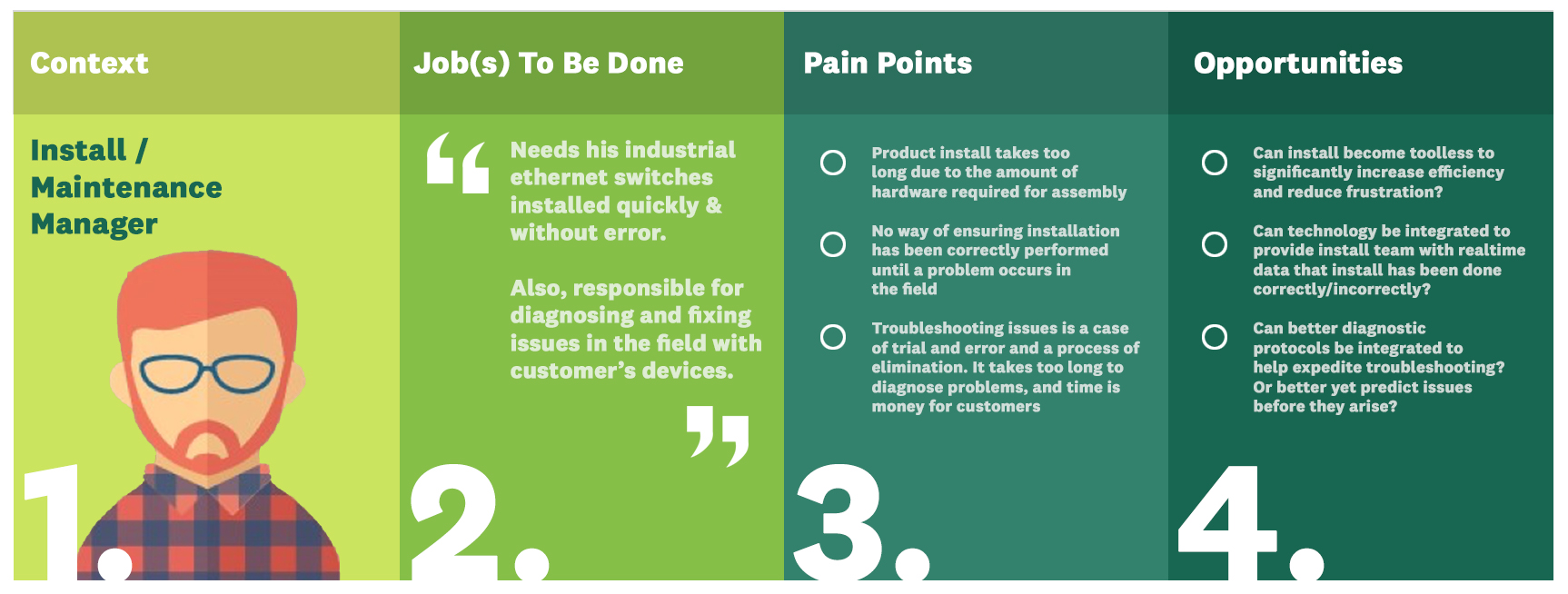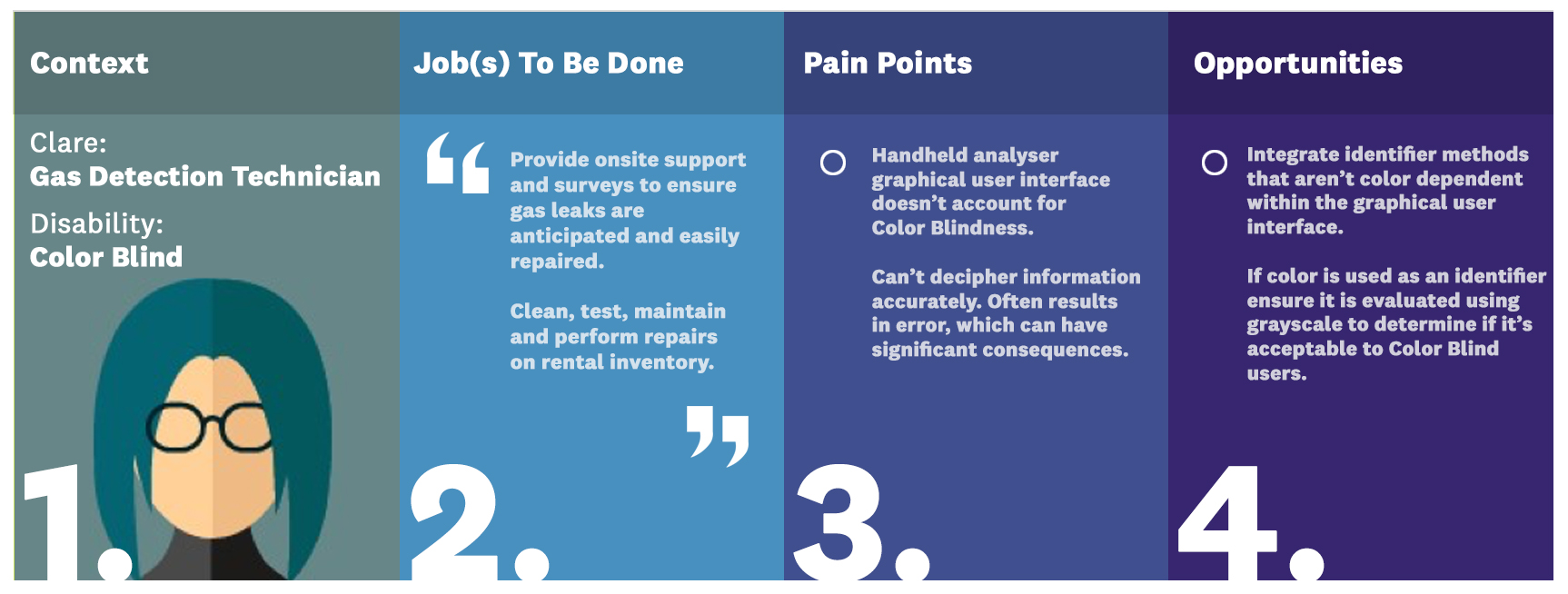
Article
Real, Inclusive, and Constantly Evolving Personas Will Improve Your Business
Proper persona development focuses your product initiatives, aligns your goals and objectives, and ultimately leads to the creation of meaningful solutions.
There’s debate on the value and usefulness of stakeholder personas within product development. The critics see traditional personas as being too fictitious and abstract. That they are often built from preconceived stereotypes and generalizations then taken as gospel despite being disconnected from reality.
The truth is that when stakeholder personas are created effectively they are a critical tool in bringing focus to your design objectives. They are instrumental in driving design concepts. In an era where inclusive and diverse design needs to be of paramount importance, personas without prejudice and with a focus on real user needs and job(s) to be done (JTBD) should be revived. But to do this, personas need to evolve beyond their simplistic, traditional construction. Personas must encompass richer and more insightful, personalized characteristics.
Here are three ways to reshape your persona-building process to ensure your end results can be used as effective tools that inform new products.
1 – Focus on real personas that will lead to meaningful solutions. Don’t put energy into pointless characteristics.
The challenge with traditional personas is that they’re rarely based on actual users. Instead, they are built around made-up, homogeneous characteristics that are heavily influenced by opinion and bias, not factual evidence. Too many times personas are not only hypothetical, but they also communicate meaningless data. Long-winded descriptions often contain a user bio, demographics, a stock photo, personality traits, career objectives, annual salary, etc.
Even if these data points were extracted from a real user, would they actually help inform the design process? Probably not. Then layer in the fact that they tend to be based on fictional users, and it’s no wonder personas are out of vogue.
In order for your personas to be valuable, they have to be built on real context and then presented in a manner that is concise and to the point. Personas should never be seen as an excuse to avoid talking to your users or to sidestep critical voice of customer (VoC) research. Quite the opposite. Engaging with your actual users to better inform personas will ensure they’re relevant. You’ll better understand what your users want and why they want it (JTBD), what pain points and challenges they’re dealing with, and how they currently complete tasks.
Talking to your users and doing proper VoC research will exponentially increase the value of your personas. Believe me, these data points are significantly more valuable than knowing their favorite color or what they normally eat for dinner!
The next challenge is presenting your data in a distilled and concise manner. Remove the superfluous fluff that the common persona has. Put all your energy into real context, job(s) to be done, pain points, and don’t hesitate to, even at this early stage, document product opportunities. These shouldn’t be fully fledged solutions, but more so a starting point to discuss what potential solutions could be.

2 – Promote and implement better inclusive design through your personas.
Why is incorporating inclusive personas, both cultural, and physical critical in the growth of your organization?
Inclusive design takes into consideration the importance of designing products and experiences that enable the maximum possible number of people to use them. In order to do this, you need to identify points of exclusion and develop solutions to address these points. This can be achieved by engaging with a broad spread of communities and cultures to negate any preconceived generalizations and stereotypes. This of course requires additional rigor, but the level of personalization that can be integrated into your personas can be the difference between product success or failure.
The beauty of more personalized personas is that they become a constant reminder to your team to ensure inclusivity exists in your offerings. Take, for example, a persona that is built around someone who suffers from a visual impairment like color blindness. If their JTBD is to analyze data in the field on a handheld device, a lack of high-contrast colors or clear visual identifiers within the interface could make their job nigh on impossible.
Knowing this critical data, designers will constantly test graphical user interface (GUI) designs within gray scale or integrate other identifier methods that aren’t color dependent to provide an inclusive solution.

Accounting for these specific task-oriented needs within your early persona creation will give designers the knowledge to alleviate these pain points during the design process.
Sometimes it’s far too easy to design for non-disabled users and ignore user disabilities, such as color blindness, deafness, blindness, dyslexia, mobility disability, deteriorating dexterity, etc., when developing new products. This can’t be accepted.
The key is to understand that your users are diverse and have unique needs. Acknowledging these needs through your personas will lead to your offerings becoming more inclusive. You’ll not always be able to accommodate every specific user desire in your solution(s), but at least acknowledging their individual needs will enable you to make informed decisions through your process.
3 – Once you have personas in place, use and evolve them! Don’t just check the box and forget their existence.
It’s a big mistake to develop personas and assume they are entirely complete and never update or evolve them. Likewise, you’d be surprised at the number of instances where personas are created and then entirely ignored throughout a product development cycle.
Well-conceived personas should be a constant guiding force throughout your product development process. But at the same time, don’t be afraid to evolve and refine them based on updated knowledge, shifts in market demands, changes in customer traits, etc. As with most things in the world these days, if you’re not evolving then the likelihood is you’re going backwards. As customers’ responses and expectations change then your personas may possibly need to also. Your customers today don’t necessarily have the same traits they did five years ago – or that they will in five years’ time.
Even if the core fundamentals of your target personas remain the same, the nuances that change could be the difference between retaining and growing business, or losing it.
Here’s where building real world personas becomes even more powerful. They force you to constantly keep in dialogue with your users, collect feedback, and enable you to evolve your personas in real-time. Even simple feedback forms, surveys, online Q&A sessions, and structured focus groups will really help you stay ahead of the competition when considering user goals and priorities as well as fundamental user pain points.
Never view your personas as ‘done.’ They’re an organic tool that need to be frequently analyzed and refined to constantly ensure your team is aligned on the right goals and objectives.
Replacing your old personas with a modern interpretation will drastically improve your business
The traditional persona needs to be replaced with a modernized real world adaptation that is focused on succinctly packaged real data. If you do this effectively, it can then become a fundamental strategic tool to focus your business and product initiatives, align goals and objectives, and lead to the creation of really meaningful solutions. When this happens, guess what? Your bottom line will have direct benefits!
Your modern personas should also significantly ensure you bring an extra layer of inclusive thinking into your organization. The better you can get at acknowledging unique differences between your users, the stronger the likelihood is that you can maximize your customer base.
Finally, be sure to keep updating and evolving your personas based on frequent user feedback and market shifts. The world around us is changing at such a speed that the companies that are willing to continue validating and expanding their personas are the ones that will thrive.
With these aspects all conquered you’ll be well set for a successful future.





